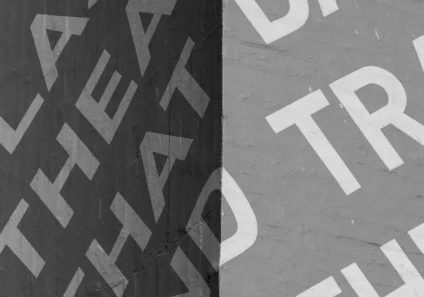
In the first article in this series, we considered the set of towns in the UK which were found most frequently to be associated with the trade in counterfeit goods, as the locations of either the senders or recipients of items. The analysis is based on case studies of working with customs and law enforcement for three key clients in different industry areas.
In this follow-up, we use the same dataset, but with the sender and recipient locations considered separately. Sender locations (goods ‘out’) are associated with distribution of goods (potentially either as manufacturing points, onward transport hubs, or locations of direct sale). They may constitute suitable candidates for on-the-ground investigation work, whilst recipient locations (goods ‘in’) are more likely to be reflective of routes by which the infringing items arrive into the country from overseas points of manufacture and/or distribution, and can provide insights into supply chains.
Figure 1 shows a ‘re-cut’ of the heat map shown in Part 1 of this series, separating out locations from which goods are being sent (‘out’) (shown in red), from those where goods are being received (‘in’) (in green). The size of the circle in each case is proportional to the number of times each location appears in the dataset, and place names in blue are those which appear in both lists (i.e. as both sender and recipient locations).

Figure 1: Bubble chart ‘heat map’ showing the frequency with which each town has been the identified location of a sender (red) or recipient (green) of counterfeit goods
The primary ‘out’ locations are highlighted as those around Manchester, western Scotland (around Glasgow), north-east England (around Sunderland), the West Midlands (around Leicester), and Milton Keynes. The ‘in’ locations are more widespread, but a number of major airport and port locations are picked up, including Belfast, Glasgow, Hastings, Liverpool, and Newport.
For towns identified as recipient locations (goods ‘in’), it is instructive to categorise the data by the country of origin, which is likely in many cases to relate to geographies in which the items are being manufactured. The frequencies with which the different origin countries appear in the dataset are shown in Table 1.
|
Sender location country |
Proportion of instances |
|
Turkey |
51% |
|
Hong Kong (China) |
18% |
|
China |
17% |
|
UK |
2% |
|
Germany |
0.4% |
|
India |
0.4% |
|
Netherlands |
0.4% |
|
Pakistan |
0.4% |
|
Saudi Arabia |
0.4% |
|
SIngapore |
0.4% |
|
South Korea |
0.4% |
|
UAE |
0.4% |
|
(not known) |
8% |
Table 1: Frequency of appearance of each sender location country within the dataset, for goods received in the UK
Turkey and Hong Kong / China can be seen to account for the vast majority of inward shipments by a striking margin. Whilst a significant part of this picture is likely to be the frequency of association of these locations with the manufacture of counterfeits, it is also likely in part to reflect the focus by customs and law enforcement on these geographies perceived as being ‘high risk’.
The same dataset is represented in Figure 2, showing the frequency of each (overseas) country as an identified point of origin for goods intercepted at recipient locations in the UK.

Figure 2: Bubble chart ‘heat map’ showing the frequency with which each non-UK country has been identified as the location of a sender of counterfeit goods intercepted at recipient locations in the UK (place names are shown only for the most frequent recipient locations)
The analysis shows that items from Hong Kong (dark green in Figure 2) most commonly arrive at ports or airports in the south-east and north of England, items from China (red) in similar locations, plus Glasgow, and items from Turkey (blue) in a wider range of locations, but more commonly via the coastal ports.
As a final part of the analysis, it is instructive to consider the specific locations within Turkey and China from which the counterfeit goods received in the UK most commonly have been sent (where this information is available) – this is referred to below as the point of ‘origin’, although in many cases these locations may simply be distribution hubs, rather than the initial places of manufacture. This information is shown in Tables 2 and 3.
|
Town / city |
Proportion of instances |
|
Marmaris |
41% |
|
Muğla |
20% |
|
İstanbul |
16% |
|
Esenler |
2% |
|
Ankara |
0.8% |
|
Arnavutköy |
0.8% |
|
Aydın |
0.8% |
|
Bursa |
0.8% |
|
Dalaman |
0.8% |
|
Fethiye |
0.8% |
|
Hayrabolu |
0.8% |
|
Kapaklı |
0.8% |
|
Kayseri |
0.8% |
|
Konya |
0.8% |
|
Mersin |
0.8% |
|
Muratpaşa |
0.8% |
Table 2: Most common locations of origin of counterfeit goods within Turkey
|
Town / city |
Proportion of instances |
|
Beijing |
19% |
|
Huizhou |
19% |
|
Guangzhou |
14% |
|
Foshan |
9% |
|
Shenzhen |
7% |
|
Putian |
5% |
|
Dongguan |
2% |
|
Jiangmen |
2% |
|
Shanghai |
2% |
|
Yiwu |
2% |
|
Zhengzhou |
2% |
Table 3: Most common locations of origin of counterfeit goods within China
The locations of these towns / cities are shown in Figures 3 and 4.

Figure 3: Most common locations of origin of counterfeit goods within Turkey (map data © Google)

Figure 4: Most common locations of origin of counterfeit goods within China (map data © Google)
Key features picked out from these visualisations are the clusters of activity around the port locations of Marmaris and İstanbul in Turkey (presumably primarily shipping points), and the manufacturing centres in Guangdong province in China.
Overall, this overview has shown how analysis and data-visualisation techniques can be used to highlight patterns of activity which can help inform policy on the most effective ways of disrupting the supply chain of counterfeit goods. Tactics can include focusing on-the-ground investigations, and customs and law enforcement focus and training, in appropriate locations in the primary geographical region of interest (i.e. the UK, in our study). This involves identifying the highest-risk points of origin for closer scrutiny of incoming goods, and carrying out on-the-ground work – including raids and seizures – at identified key overseas focuses of activity.








